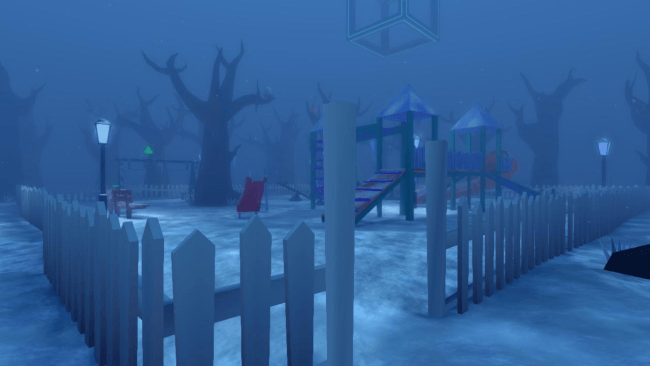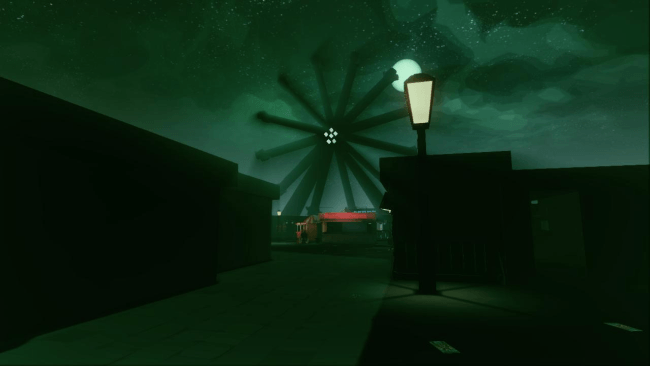- Wondering how to get Monopoly GO! free rolls? Well, you’ve come to the right place. In this guide, we provide you with a bunch of tips and tricks to get some free rolls for the hit new mobile game. We’ll …
Best Roblox Horror Games to Play Right Now – Updated Weekly
By Adele Wilson
Our Best Roblox Horror Games guide features the scariest and most creative experiences to play right now on the platform!The BEST Roblox Games of The Week – Games You Need To Play!
By Sho Roberts
Our feature shares our pick for the Best Roblox Games of the week! With our feature, we guarantee you'll find something new to play!All Grades in Type Soul – Each Race Explained
By Adele Wilson
Our All Grades in Type Soul guide lists every grade in the game for all races, including how to increase your grade quickly!
Master Reboot Review
In the not-too-distant future of Master Reboot, death is no longer an end, merely a transition. Thanks to the Soul Cloud, a spiritual software storehouse, owners of Soul Cloud real estate can upload their very being to the database and then spend the rest of eternity re-experiencing memories from the time they were alive. Still-breathing friends and family can visit these memories as well, even sending messages to the deceased-but-not-gone inhabitant of the Cloud via luminous blue rubber ducks.
Your experience in the Soul Cloud begins amidst disaster; you awaken unaware of who you are or why you’re there, stumbling toward your personal memorial hub as bits of corrupt data flash within the scenery. A mangled voice taunt-whispers from nowhere, “Remember…” while a glowing glyph threatens you with a Hieronymus Bosch-style demonic calling card. What should be an idyllic induction to your eternal rest home has become a haunted, confusing space devoid of answers to the endless questions circling your mind.
Master Reboot places you in the shoes and emotions of this unknown soul directly; there’s no tutorial, introduction, or hint of what is going on to either player or protagonist. Until you pass through the empty Soul Cloud induction office, you may not even realize where you are. Because of this, from minute one, you’re incentivized toward all aspects of this psychological horror puzzle adventure: perturbed by the not-quite-rightness of your surroundings, encouraged to figure out who and why you are, and motivated to explore further to do so.

You’re in the Cloud
In the not-too-distant future of Master Reboot, death is no longer an end, merely a transition. Thanks to the Soul Cloud, a spiritual software storehouse, owners of Soul Cloud real estate can upload their very being to the database and then spend the rest of eternity re-experiencing memories from the time they were alive. Still-breathing friends and family can visit these memories as well, even sending messages to the deceased-but-not-gone inhabitant of the Cloud via luminous blue rubber ducks.
Your experience in the Soul Cloud begins amidst disaster; you awaken unaware of who you are or why you’re there, stumbling toward your personal memorial hub as bits of corrupt data flash within the scenery. A mangled voice taunt-whispers from nowhere, “Remember…” while a glowing glyph threatens you with a Hieronymus Bosch-style demonic calling card. What should be an idyllic induction to your eternal rest home has become a haunted, confusing space devoid of answers to the endless questions circling your mind.
Master Reboot places you in the shoes and emotions of this unknown soul directly; there’s no tutorial, introduction, or hint of what is going on to either player or protagonist. Until you pass through the empty Soul Cloud induction office, you may not even realize where you are. Because of this, from minute one, you’re incentivized toward all aspects of this psychological horror puzzle adventure: perturbed by the not-quite-rightness of your surroundings, encouraged to figure out who and why you are, and motivated to explore further to do so.
Heading toward these goals lands you in your personal memory hub, the island city where all of your memories should be stored. The corruption that was visible outside is even more concentrated here, as your central, core memory has shattered and only a handful of past experiences remain. In order to piece back together your primary memory, you’ll need to explore and solve those that are available, learning bits and pieces about yourself as you go along.
These memories act as one-off puzzle rooms that contain unique solution requirements and atmospheres. For instance, in your “Childhood Memory,” you’ll explore your old toy-strewn room while the size of a doll, seeking out three keys that will open a closet containing an early memory from your youth. In “Beach Memory,” a romantic trip to the shore with your boyfriend must be pieced back together by finding his engagement ring buried in the sand. “Circus Memory” reveals a dark, tragic event as you scour the foggy woods around a brightly lit circus tent for a way inside. Every memory is representative of your true past, but also skewed and corrupted by the strange, unknown girl who haunts each one. Solving the puzzles and completing the room will reveal the true memory, unlocking additional rooms and chances to learn more.
Blue ducks are also scattered throughout each memory, containing snippets of information about your life. Chat logs, photographs, newspaper clippings, work forms, and more all combine to paint a picture of the history you’ve forgotten, also acting as our primary method of plot explanation and progression. While finding these ducks in each level is technically optional, their pieces of narrative are critical to understanding exactly what’s going on in the Soul Cloud and to you.
What’s going on, as it turns out, is pretty tragic, and involves much more than mere data corruption. The unsettling ambiance of most memories reinforces this and acts as a constant reminder that something terrible is at play. The grating of violin strings as a shadow darts by, the sudden crunching of dirt as the glowing-eyed girl draws near, and the darkened hallways illuminated by only a flashlight all keep you primed for a sudden danger or “death” at any turn. While this expands the horror game aspect of Master Reboot, it makes the adventure-exploration part of the game less enjoyable. With most memories leaning towards “dark and stormy” and presenting some type of threat, those memories that are meant to be enjoyed and approached calmly—like the Beach—are tarnished by the always-looming fear instilled by the rest. Duck- and narrative-hunting also feels rushed when raking violins are urging you ever-forward, faster, and making it difficult to internalize the game’s engaging puzzles and plot.
This unbalanced genre favoring extends to Master Reboot‘s finale, which forgets it’s a first-person puzzle game in order to force a timed platforming challenge on unsuspecting players. What could have been a brains-vs-brains battle of tricks learned from previous puzzles is instead degraded to a frustrating final push to an unsatisfying conclusion. Luckily, the game is strong enough until this point—even considering its overly-horrified vibe—that it’s still worth experiencing, just with a “mind the finale” warning kept in pocket.
That experience is a striking, unique adventure that rewards observant players with an engaging story and horror fans with an eerie, haunting playground. With a variety of puzzles and challenges to overcome and a world that is surreal-yet-logical, Master Reboot is a memory worth uploading to your Soul Cloud.

The good

The bad
More articles...
Monopoly GO! Free Rolls – Links For Free Dice
By Glen Fox
Wondering how to get Monopoly GO! free rolls? Well, you’ve come to the right place. In this guide, we provide you with a bunch of tips and tricks to get some free rolls for the hit new mobile game. We’ll …Best Roblox Horror Games to Play Right Now – Updated Weekly
By Adele Wilson
Our Best Roblox Horror Games guide features the scariest and most creative experiences to play right now on the platform!The BEST Roblox Games of The Week – Games You Need To Play!
By Sho Roberts
Our feature shares our pick for the Best Roblox Games of the week! With our feature, we guarantee you'll find something new to play!All Grades in Type Soul – Each Race Explained
By Adele Wilson
Our All Grades in Type Soul guide lists every grade in the game for all races, including how to increase your grade quickly!








 “
“